I tried another Iron Man-style exoskeleton and now I'm stronger than ever
I tried the Hypershell exoskeleton to power up my adventures
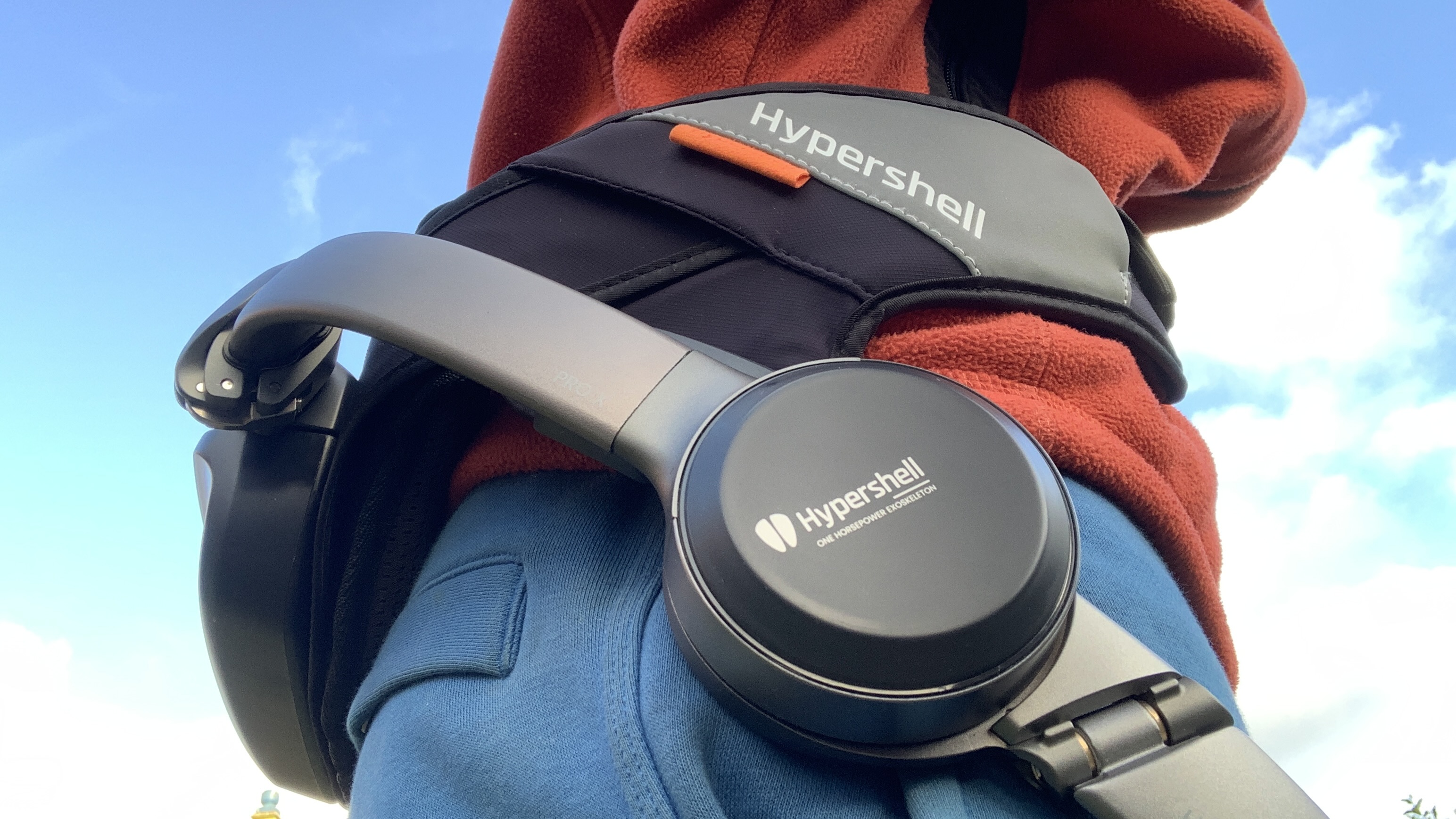
My first foray into the world of exoskeletons was partway through May 2024 when I alarmed the neighbours by wearing the Dnsys x1 exoskeleton around the streets near where I live. “Is that Iron Man?” they said.
Almost a year on and I’m turning heads again, this time with the Hypershell X exoskeleton, a CES Innovation Awards 2025 winner in the robotics category.
As someone who is more accustomed to the best smartwatches being the limit of wearable technology, it took me a little while to get over the initial social discomfort of wearing it. There’s no getting around how silly it looks. But after showing and demonstrating it to every friend or family member who visited in the last few months, I have long since jettisoned any social anxiety.
Unlike the Dnsys, this time round I thought I’d focus on using the exoskeleton to supercharge my bike travels, strapping myself into a skeleton that has, in a way, completely transformed the way I look at the world.
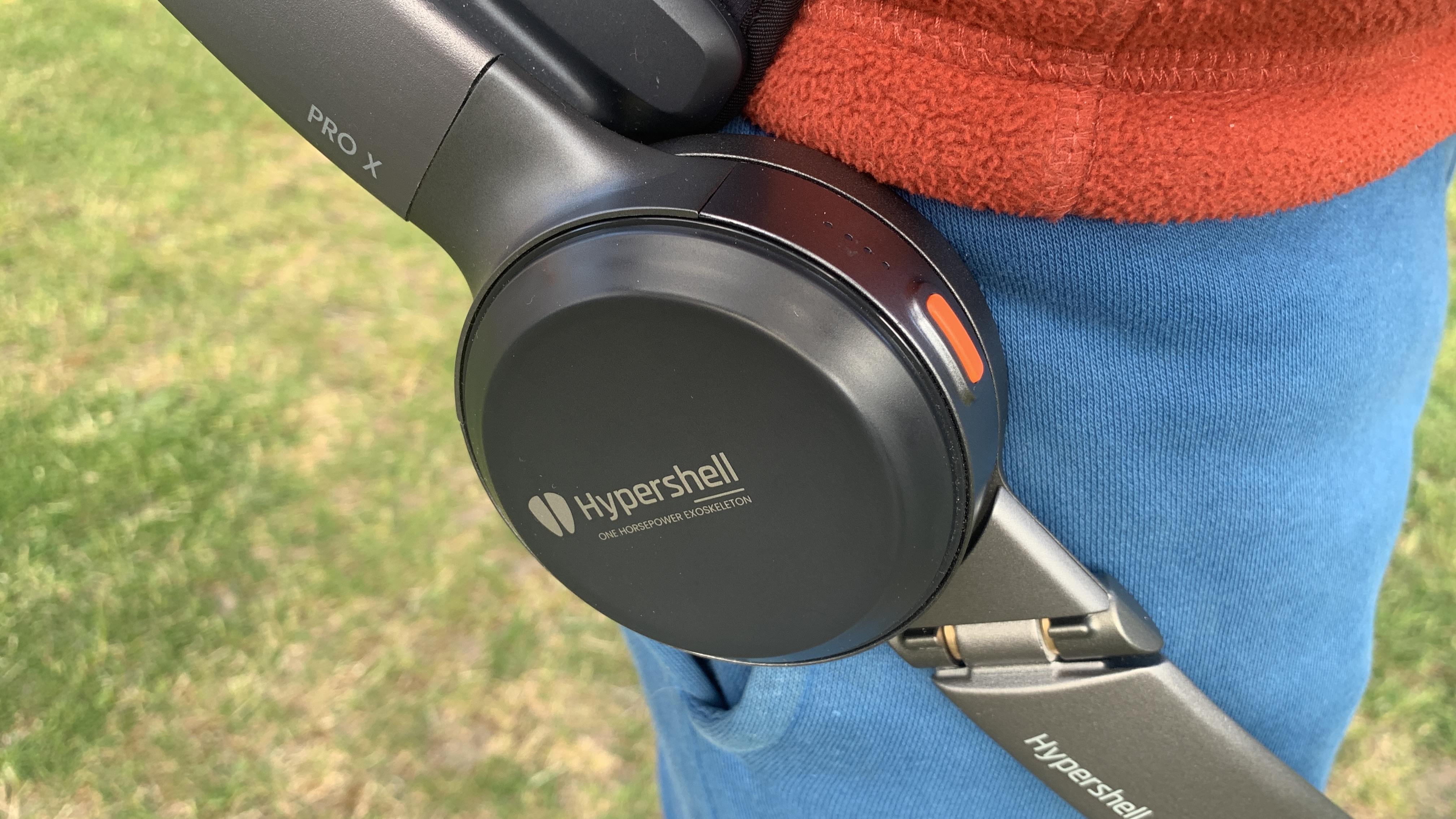
Dnsys X1 exoskeleton: At a glance
- What is it? A powered exoskeleton that offsets up to 30kg in either assistance or resistance modes.
- Who is it for? Hikers, adventurers, people in rehab, those interested in unconventional resistance training.
- How much does it cost? $799 / £630 / around AU$1,315
Build and design
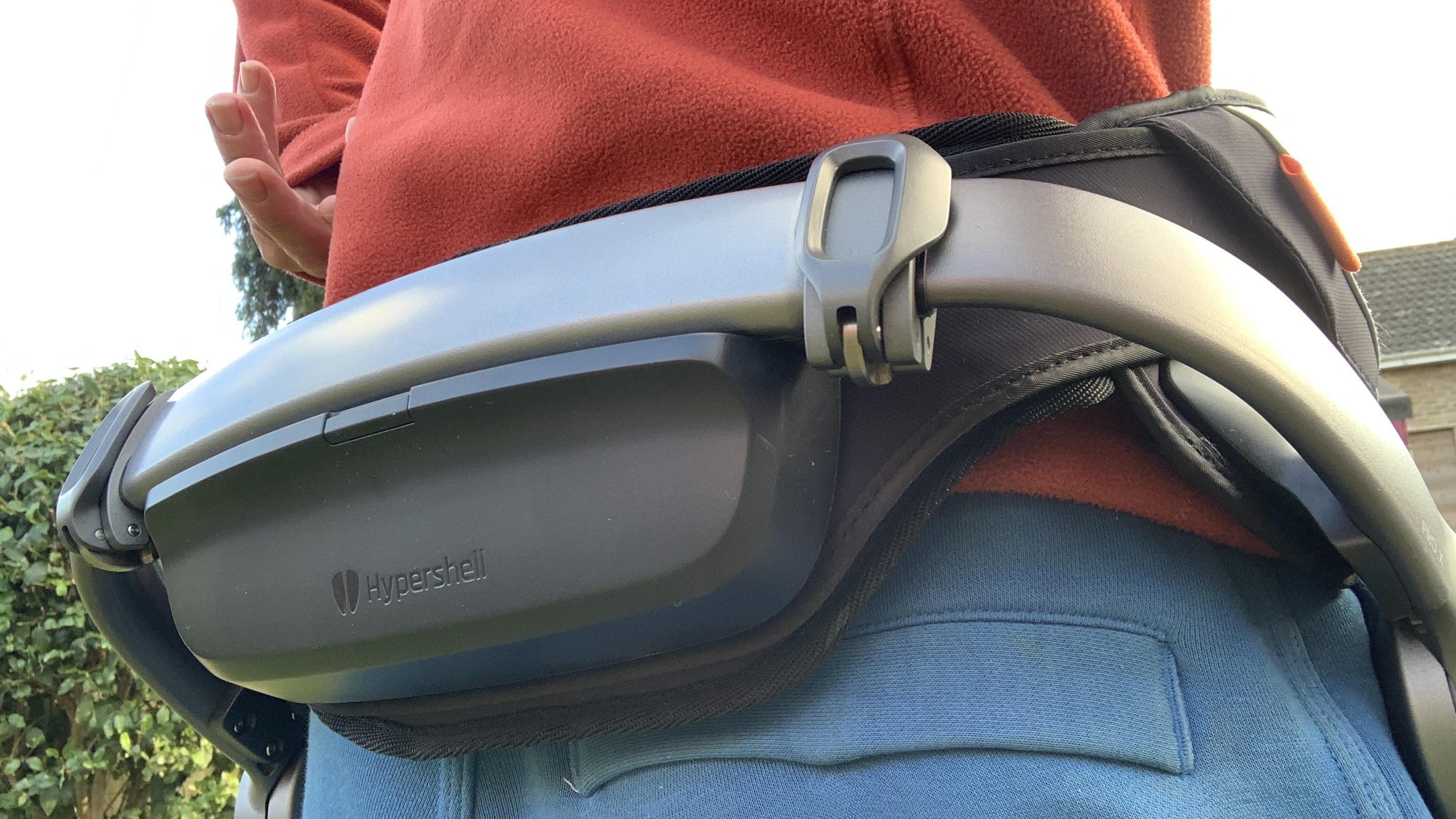
I liked the Dnsys X1, but it did have a number of design problems which affected its usability. I didn’t even think about using it on a bike because it was too clunky and unpredictable. Far from feeling like an extension to my body, it awkwardly forced my body to contort to its mechanical whims. Using the Hypershell X has been a much more positive experience.
I began by downloading the Hypershell app, a virtual assistant guiding me through every step of the process of attaching and using the device. I might have got there with a written manual, but having an app made it all more seamless than I ever could have hoped. The app instructed me to perform certain actions to calibrate the exoskeleton and determine whether I was operating it correctly. It only let me move on in the setup if I could prove I was operationally proficient.
Setup was therefore quick, easy, and straightforward. Not only was I up and running in no time at all but I was also confident that I knew how to use it properly. It was one thing to put it on, it was a whole other thing to trust it while sat on top of a bike travelling 20mph. With that frightening thought, I jumped on my bike and powered up the exoskeleton.
Sign up for breaking news, reviews, opinion, top tech deals, and more.
Operating the exoskeleton
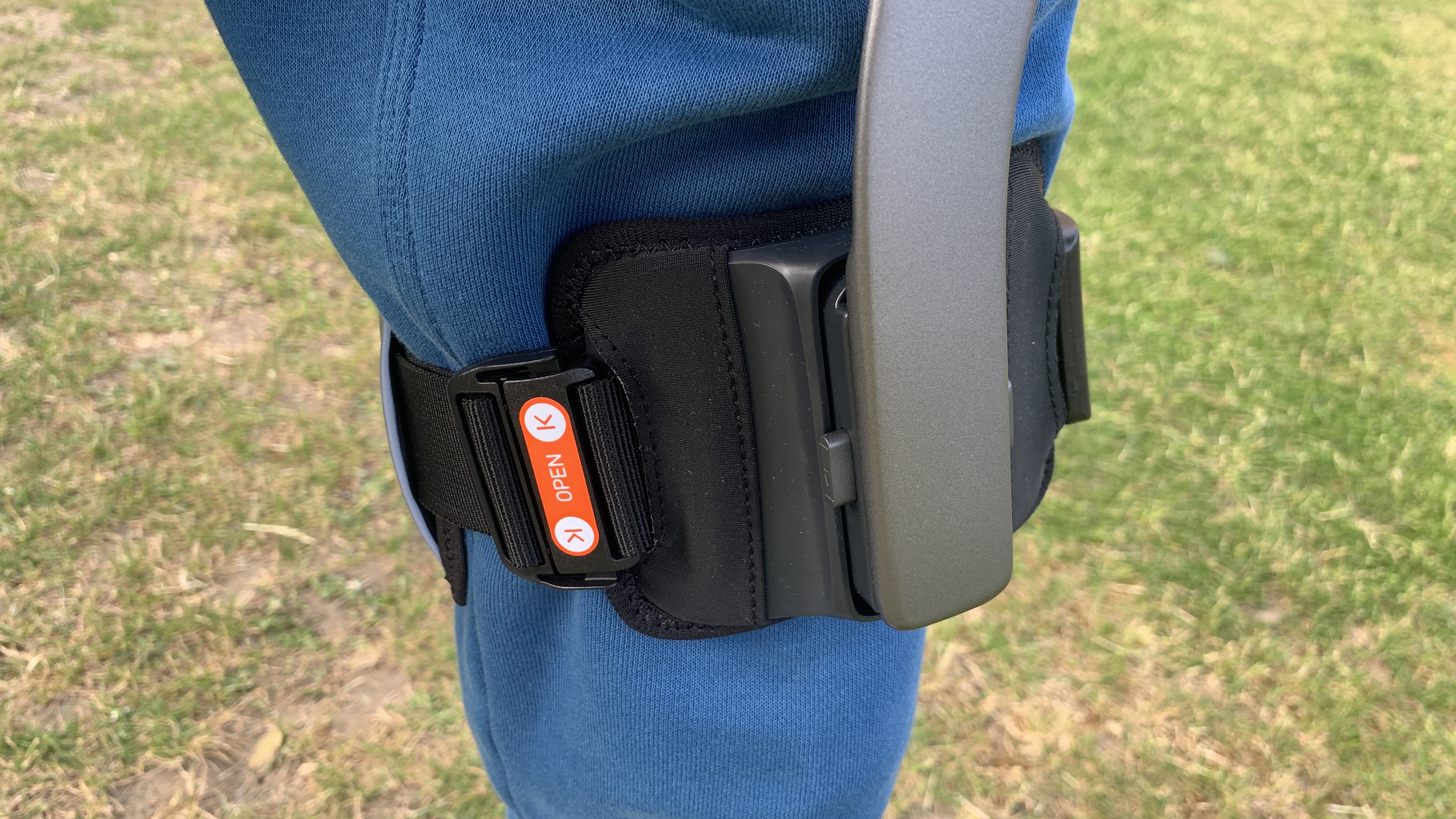
I’ve ridden a lot of the best e-bikes in my time, but exoskeleton assistance on a regular bike is new to me. The first few miles took a bit of getting used to; every bit of movement and clunk of the device was met with an internal feeling that I was about to be propelled into oncoming traffic. However, far from coming to a gruesome end, I’ve actually thoroughly enjoyed using the exoskeleton and, despite looking silly, would say I enjoyed it. The state-of-the-art robotics, excellent ergonomics, and next-level AI combined to create a comfortable yet powerful drive system, increasing my leg power.
At only 1.8kg of weight, I didn’t notice I was wearing the thing after a while. The delivery of 800 W peak power and up to 32 N·m continuous torque made it feel like I was riding an e-bike rather than a conventional road bike. I was able to go quicker and further than ever before. What would have previously been arduous or impossible became challenges that the exoskeleton accepted without the sort of fuss my muscles might have done.
The only thing I could fault the device for was its over-exuberance. At times, when I was rotating the drive particularly quickly, the exoskeleton wasn’t quick to release when I had ceased pedalling. This led to the hydraulic arms unhelpfully trying to force my legs to move for a second or two. It wasn’t anything dangerous, but certainly hindered the user experience a little. As a result, I got used to easing off rather than stopping abruptly.
Assist mode
It’s 2025 and I can’t think of the last time I saw a new tech product that didn’t make some mention of AI. The Hypershell X is no different. A built-in AI-based MotionEngine detects movement intentions in real time and automatically adjusts assistance to deliver precise support. The more you use it, the more the MotionEngine adapts to you. Creepy? Maybe, but incredibly useful all the same.
There are 10 adaptive copilot states including cycling, walking, running, and mountaineering. Each state is fine-tuned to deliver performance based on activity. Although most of my focus was on riding a bike, I also tested it across other activities. Going up and down stairs was far and away my favorite assisted activity, although probably the most dangerous!
We’ve come to expect our devices to adapt to us and the Hypershell X does a great job of it.
An assisted future
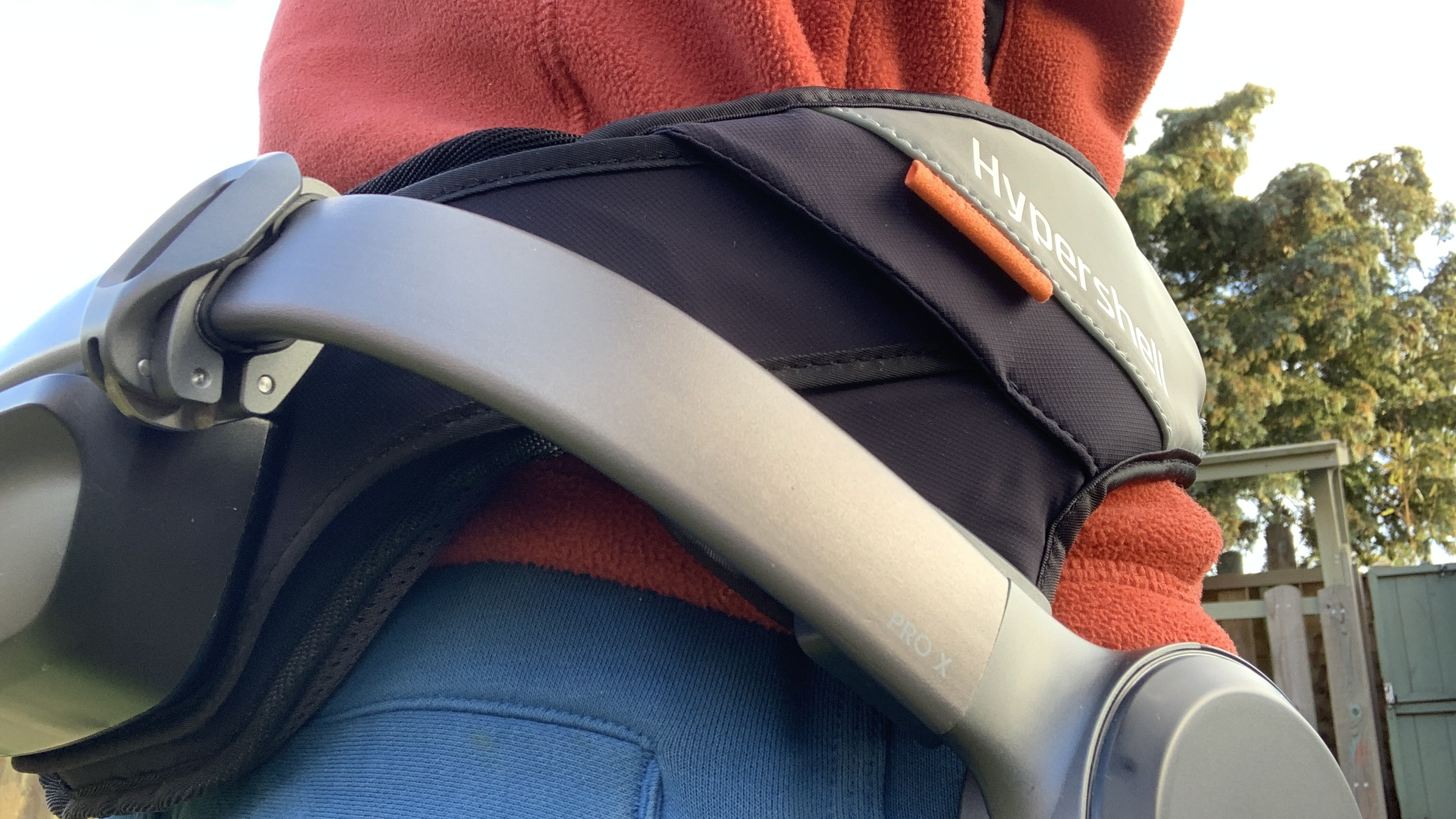
According to ABI research, “industrial shipments [of exoskeletons] will hit 116 million units in 2030, and revenue will be about US$1.8 billion by the end of the decade.” Wearable robotics will likely see a significant upturn in military and industrial settings but that will no doubt lead to technological advancements in commercial markets too.
It’ll be an interesting and potentially slightly unsettling few years. My neighbours and humans in general will no doubt get used to seeing people around wearing exoskeletons and at that point maybe Iron Man won’t seem so futuristic after all.
Whether we’re prepared for that is another question altogether. For now, I’ll just enjoy being able to run faster, jump higher, and go for longer. Not bad for someone who’s recently celebrated his 40th birthday.
You might also like:

Paul is a digital expert. In the 20 years since he graduated with a first-class honours degree in Computer Science, Paul has been actively involved in a variety of different tech and creative industries that make him the go-to guy for reviews, opinion pieces, and featured articles. With a particular love of all things visual, including photography, videography, and 3D visualisation Paul is never far from a camera or other piece of tech that gets his creative juices going. You'll also find his writing in other places, including Creative Bloq, Digital Camera World, and 3D World Magazine.
You must confirm your public display name before commenting
Please logout and then login again, you will then be prompted to enter your display name.